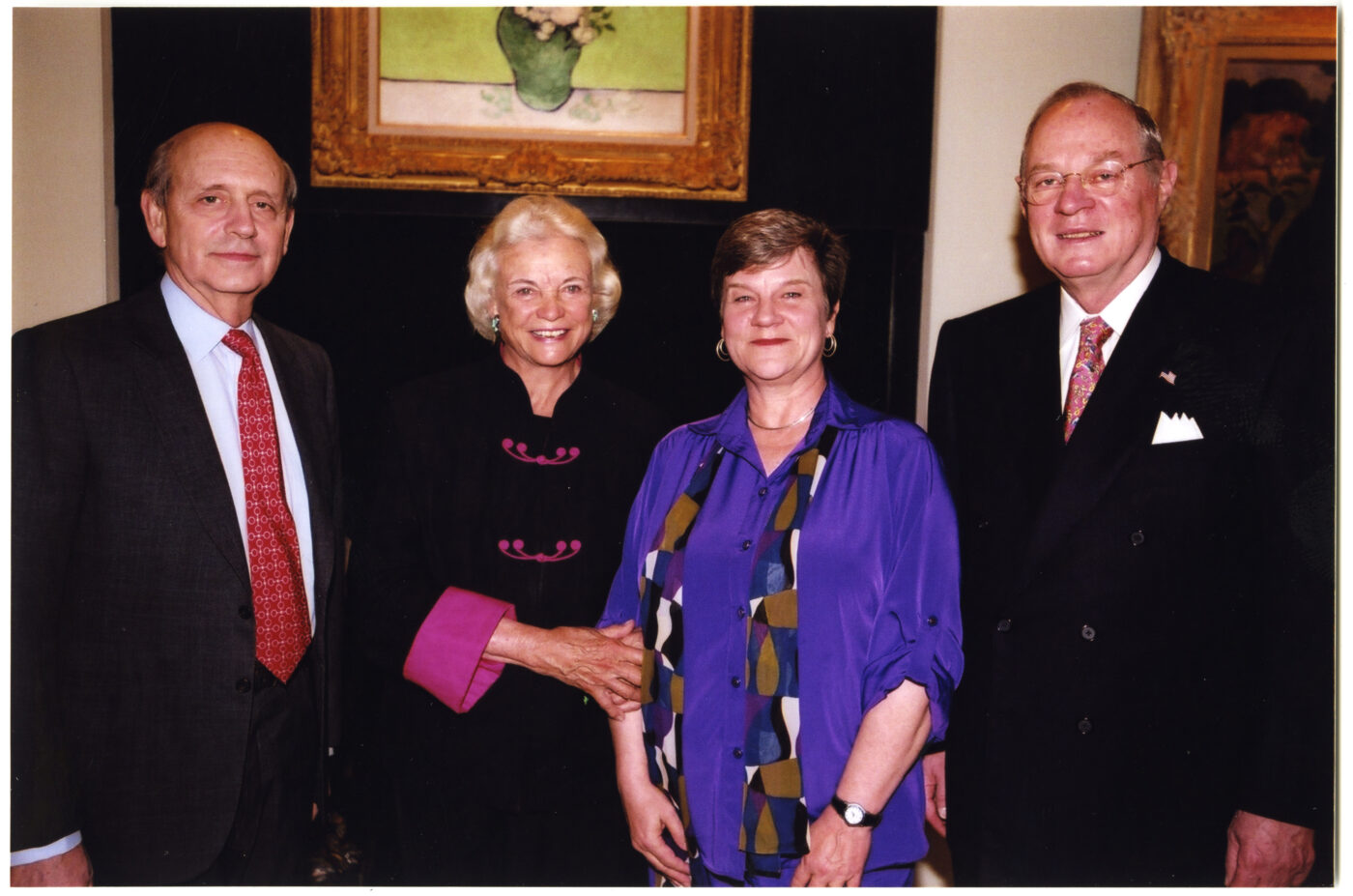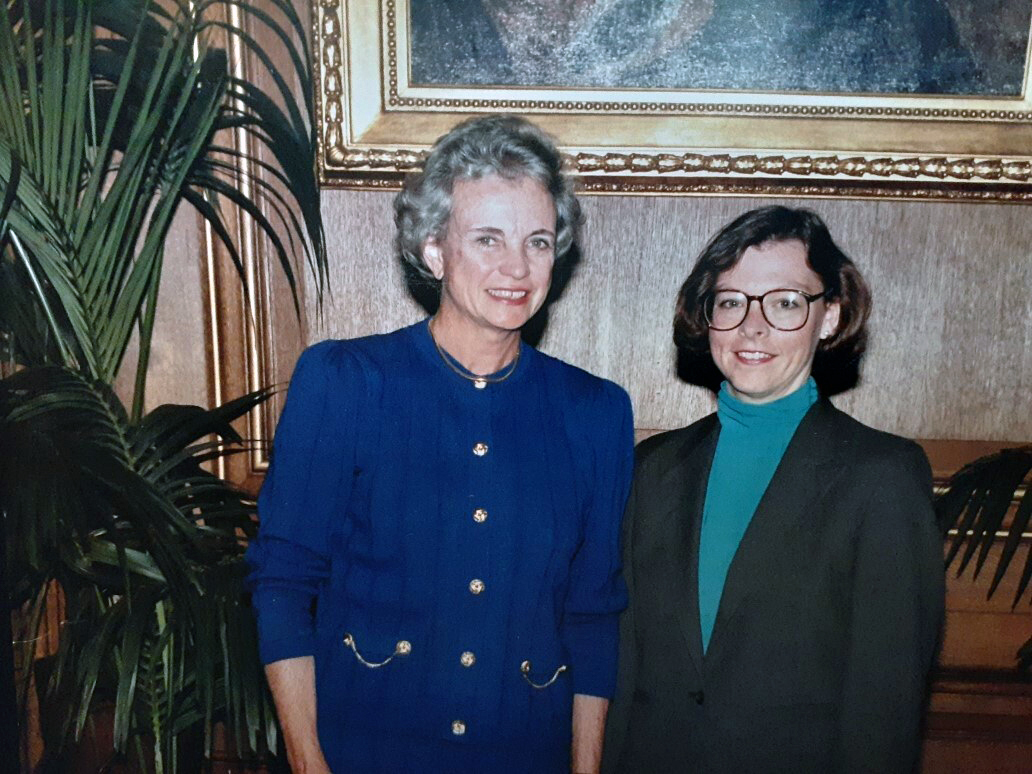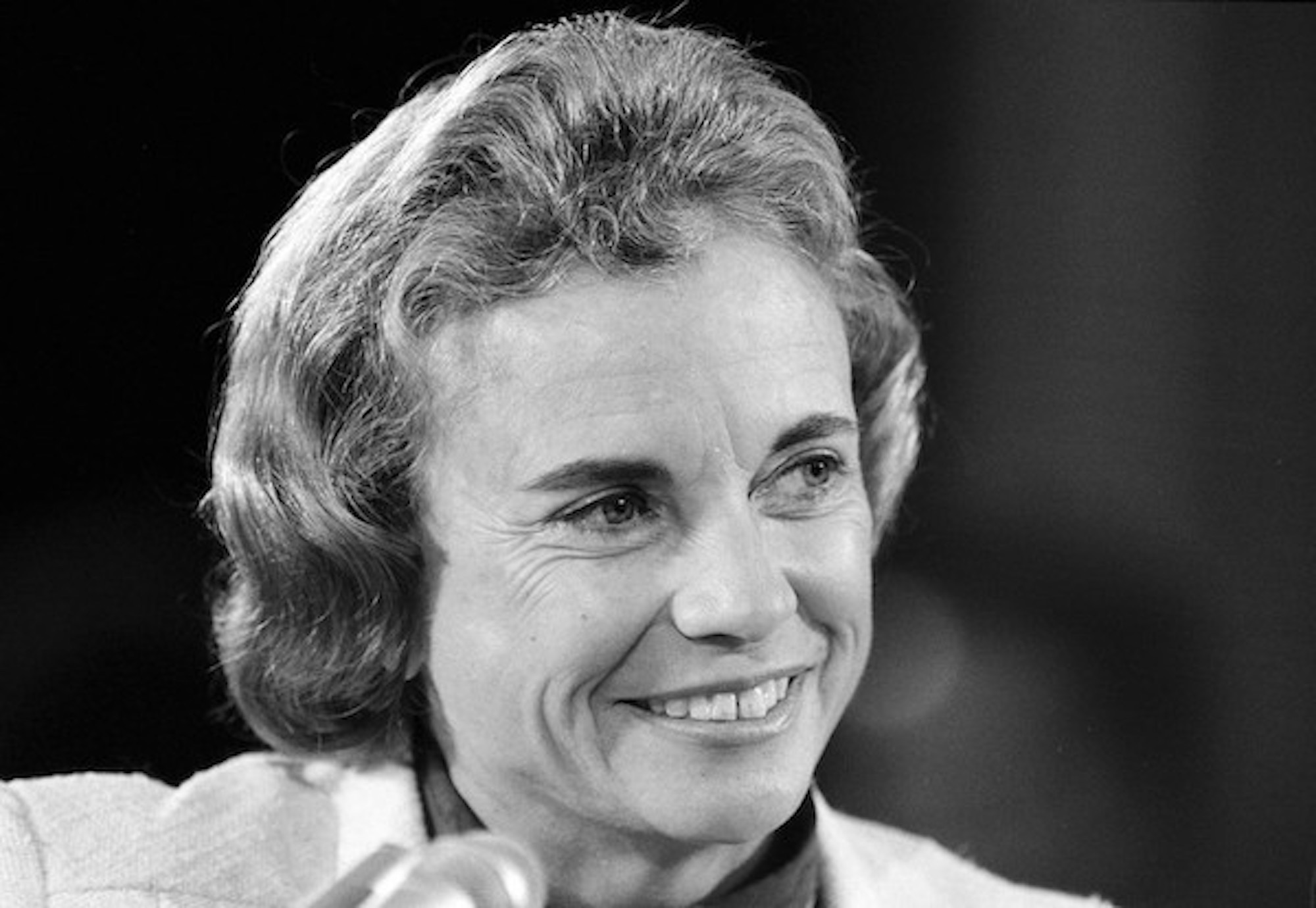
Sandra Day O’Connor, the first woman on the United States Supreme Court, died last week in Phoenix at the age of 93. A moderate conservative, O’Connor was a key swing vote in a number of important cases that were on the docket during her 25-year tenure on the Court, covering everything from abortion and affirmative action to sex discrimination and voting rights.
Penn Today asked experts at the University to discuss O’Connor and her legacy. Here, Annenberg Public Policy Center director Kathleen Hall Jamieson, Professor of Practice in Political Science and CEO of CHILD USA Marci A. Hamilton, and former Penn Carey Law School dean Ted Ruger share their thoughts on the history-making justice.
Kathleen Hall Jamieson, director of the Annenberg Public Policy Center and Elizabeth Ware Packard Professor at the Annenberg School for Communication
When Ronald Reagan made history in 1981 by nominating Sandra Day O’Connor to the Supreme Court, his chief of protocol, Lee Annenberg, helped shepherd the Arizona state judge and former state legislator through the confirmation process. They stayed in touch. When, in my roles as Annenberg School Dean and Director of the Annenberg Public Policy Center, I recommended that the Annenbergs’ newly- formed Annenberg Foundation Trust at Sunnylands focus on civics education, Lee suggested that I consult with Justice O’Connor about next steps.
The Justice charted a course that led to the Annenberg Constitution Day Survey and meetings with associate justices Breyer, Kennedy, and O’Connor. The results: online, no-cost books, video games created in partnership with Justice O’Connor’s iCivics, and documentary films on key Constitutional cases for high school students. In meetings with Mrs. Annenberg and me, the team of justices that O’Connor assembled selected topics and checked content for accuracy. To ensure that the work would continue, Mrs. Annenberg created a permanent civics endowment at the Annenberg Public Policy Center at Penn. We named it the Leonore Annenberg Institute for Civics (LAIC) in her honor.
At every step of the way, Justice O’Connor was a constructive critic, reliable guide, and champion. In speeches to civics groups around the nation, she reminded audiences of our findings about how few Americans can name the three branches of government.
In partnership with the Sunnylands Trust, the Leonore Annenberg Institute for Civics brought students from around the country to the Supreme Court building to learn about the Constitution from the justices. In those conversations and in her 2008 Annenberg lecture at Penn, Justice O’Connor reminded us that an appreciation of the Constitution is not transmitted through the gene pool. Instead, we have to teach and be taught why it was written, what protections and obligations it offers, and why and how we can ensure that it continues to serve the country well. Justice O’Connor’s life and work modeled the kind of citizenship to which we should all aspire. The civics work that she inspired is part of her living legacy.
Marci Hamilton, Professor of Practice in Political Science and Fox Family Pavilion Non-resident Senior Fellow in the Program for Research on Religion at Penn, and founder and CEO of CHILD USA
It was such a privilege to clerk for Justice Sandra Day O’Connor. Hers was a special clerkship, because she not only held us to high standards, but also set an example of the good life in and beyond the law. The Supreme Court clerk role in the 1980s and 1990s was a grueling, gut-wrenching experience. From a clerk’s perspective, the job had no days off unless you took one at your peril. I didn’t work Christmas and Easter days. The learning curve was steep and the volume of work high. Unlike today’s Court that issues on average 75 opinions a year, the 1989 Term when I clerked produced 137 opinions. We worked 7 days a week, often into the night. It was the nature of the job.
Despite the workload, SO’C (as we called her) frequently reminded us that life must be more than work, and we should not sacrifice every aspect of our lives even for the Supreme Court. That included not forgetting who you are.
She never lost sight of her origins on a ranch in Arizona, decorating her chambers to reflect Southwestern colors, images, and furniture, and making Southwestern lunches for her clerks on the Saturdays we discussed the cases in an upcoming oral argument session. The Justice also frequently asked about family and wanted to know how everyone was doing. One time, having been summoned, I walked into her office when she was talking to one of her sons. As she hung up, she looked at me, and said, “You’re always a mom,” with a smile.
Looking back on it, I love that she never acted as though she needed to be a man to be there. She was Sandra Day O’Connor through and through every single day.
When she arrived at the Court, one of the first things she accomplished was adding an exercise class weekday mornings in the gym where the men played basketball. An athlete herself, this was her message to the female clerks that they actually could (and should) take an hour each day to workout. She also brought in pumpkins for us to carve for Halloween and insisted on taking everyone to see the cherry blossoms in the spring. There would be some discreet grumbling amongst us as we shut down our computers for one activity or another, knowing that was an hour lost, but she was so right. For that, I will be forever grateful.
Former Penn Carey Law School dean Ted Ruger, a scholar of constitutional law
Justice Sandra Day O’Connor is rightly celebrated as a pioneer who paved the way forward for women in the judiciary and the legal profession. In forging an unprecedented career in Arizona state politics and then highest levels of the state and national judiciary, she overcame rampant categorical discrimination from the legal profession of her era, failing to receive top law firm offers out of Stanford Law School despite being at the top of her graduating class.
Yet for all of her real and enduring forward-looking impact, Justice O’Connor’s judicial career also reflects and embodies older conceptions of conservatism and judicial authority that have faded in more recent decades since her retirement from the Supreme Court in 2006. Justice O’Connor’s style of jurisprudence entailed a commonsense pragmatism and a commitment to the Supreme Court doing less, rather than more, in order to decide each case on particular grounds while remaining faithful both to judicial precedent as well as the realities of public consensus and understanding about important constitutional rights. Like few Justices before or since, she somehow managed to achieve the difficult fusion of adherence to traditional precedent as well as embracing a gradual form of living or evolving constitutionalism in certain areas. Her key opinions and votes on cases involving same sex marriage and relationships, reproductive freedom, affirmative action, and federalism illustrate her pragmatism and sensitivity to other court decisions and to the broader political and public context in which the Supreme Court operates.
Justice O’Connor also showed an unusual form of humility and moderation in her decision to retire while relatively healthy and (in Supreme Court Justice terms) youthful age of 75. The U.S. Supreme Court is unusual in the world for having no term limit or retirement age, and the average age of Justices leaving the Court by retirement or death in recent decades has crept steadily upwards to well over age 75. Of the eight other Justices with whom Justice O’Connor served on the stable Rehnquist Court from 1996 through her own retirement—only Justice David Souter chose to retire earlier than she did. Like so much else she did professionally, even in her own retirement choice Justice O’Connor modeled a form of public service and conservatism that seems in short supply today, truly believing that the public is served by government officials showing restraint rather than doing all they can to maximize their own views and policies










